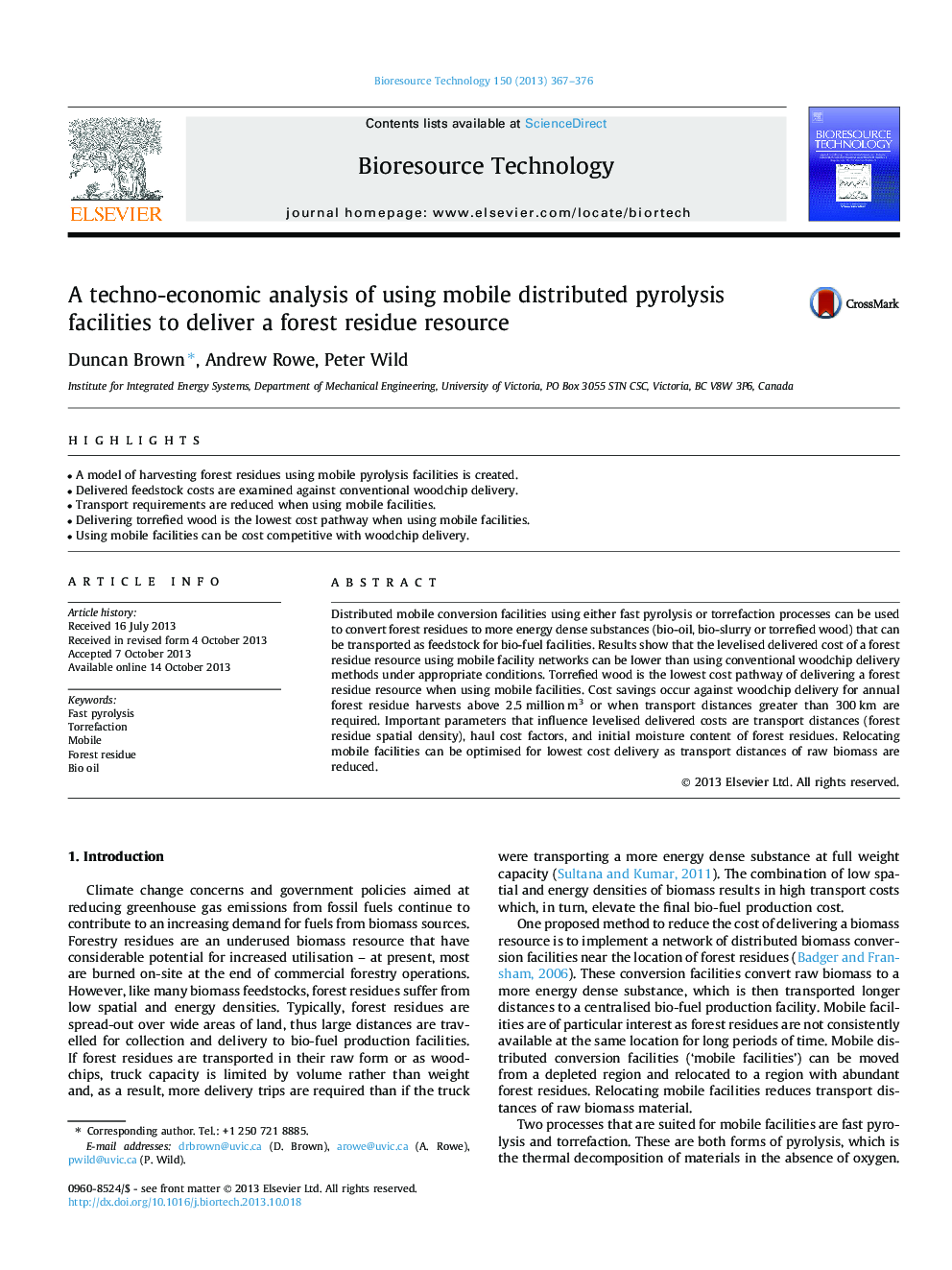| Article ID | Journal | Published Year | Pages | File Type |
|---|---|---|---|---|
| 7079528 | Bioresource Technology | 2013 | 10 Pages |
Abstract
Distributed mobile conversion facilities using either fast pyrolysis or torrefaction processes can be used to convert forest residues to more energy dense substances (bio-oil, bio-slurry or torrefied wood) that can be transported as feedstock for bio-fuel facilities. Results show that the levelised delivered cost of a forest residue resource using mobile facility networks can be lower than using conventional woodchip delivery methods under appropriate conditions. Torrefied wood is the lowest cost pathway of delivering a forest residue resource when using mobile facilities. Cost savings occur against woodchip delivery for annual forest residue harvests above 2.5 million m3 or when transport distances greater than 300 km are required. Important parameters that influence levelised delivered costs are transport distances (forest residue spatial density), haul cost factors, and initial moisture content of forest residues. Relocating mobile facilities can be optimised for lowest cost delivery as transport distances of raw biomass are reduced.
Related Topics
Physical Sciences and Engineering
Chemical Engineering
Process Chemistry and Technology
Authors
Duncan Brown, Andrew Rowe, Peter Wild,
